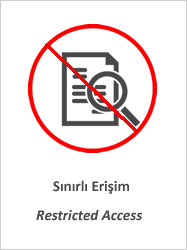Matter, Form and Meaning in Architecture: A Cross-Cultural Reading of Parliament Buildings
Künye
DİLAVEROĞLU, Büşra. "Matter, Form and Meaning in Architecture: A Cross-Cultural Reading of Parliament Buildings". International Journal of Architectural Research, (2025).Özet
Purpose – Seeking meaning in architecture has been an ever-present strand in architectural theory, whose
reverberations sound in critical considerations of the complicated interdependence among matter, form and
meaning conveyed in designed environments. The interdependence is especially evident in public architecture,
where buildings pass beyond functional significance to become bodily expressions of administration, culture
and national identity. Of these, parliamentary buildings hold a particular significance in their designs since they
reflect the political aspirations, ideological models and social values of their eras. Designed as a vocabulary of
governance, these buildings articulate the prevailing political ethos, encoding meaning through their materiality,
spatial composition and architectural language. This study explores the semiotic dimensions of parliamentary
buildings across three distinct geographical contexts, analyzing how their design is crafted to convey meaning.
Design/methodology/approach – This study examines the semiotic dimensions of three parliamentary
buildings, analyzing how architectural elements – form, materiality, ormamentation and spatial arrangement
– encode and communicate meaning. Using semiology as a methodological framework, it explores three
parliament buildings in distinct geographies, historical contexts and political systems: the Scottish Parliament
(Deconstructivism), the Welsh Parliament (Contemporary Architecture) and the Turkish Parliament (Neo-
Classicism).
Findings – The findings reveal that architectural signs and their signifiers are given meaning according to their
respective eras’ ideological foundations and stylistic preferences. Certain elements, such as the geography and
historical context of a building, are semiotically reflected through material choices, serving as tangible
connections to place and heritage. In contrast, architectural styles and their symbolic meanings are more
explicitly influenced by the prevailing ideologies and architectural trends of the time, shaping the symbolic
significance and interpretation of architectural signs.
Originality/value – This study provides a novel framework for understanding how ideological and political
identities are embedded in built environments by applying semiotic theory to three parliament buildings in
different geographies with different stylistic approaches. It offers insights into the constructed relationship
between architecture and governance, contributing to architectural theory and practice.



















